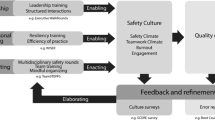Abstract
Unlike other fields of medicine, critical care is not defined by a unique procedure or, in some countries, even by a unique type of clinician. While often defined geographically as in, critical care is what happens in an intensive care unit, this definition has become increasingly untenable as critical care is frequently provided in emergency departments, on wards, and during transport. Therefore, the innovation we recognize as modern critical care is less a technologic creation and more of an organizational innovation. This book is designed to offer evidence-based solutions to important questions. How might outcomes improve without a specific targeted improvement in measurable processes? Who should deliver critical care and what sort of training should they have? How do you facilitate and enhance team communication and leadership? Can critical care be optimized by regionalizing, specializing, or outreach? How can care be organized under extreme scenarios of pandemic and limited resources? Can staff burnout be prevented or its effects mitigated? Our field has an even greater responsibility to incorporate the available information on organizing critical care and improving quality at the hospital level as we are developing more compelling evidence for patient level interventions.
Access this chapter
Tax calculation will be finalised at checkout
Purchases are for personal use only
Similar content being viewed by others
References
Grenvik A, Pinsky MR. Evolution of the intensive care unit as a clinical center and critical care medicine as a discipline. Crit Care Clin. 2009;25(1):239–50, x.
Erickson SE, Martin GS, Davis JL, Matthay MA, Eisner MD, NIH NHLBI ARDS Network. Recent trends in acute lung injury mortality: 1996–2005. Crit Care Med. 2009;37(5):1574–9.
Ferrer R, Artigas A, Levy MM, et al. Improvement in process of care and outcome after a multicenter severe sepsis educational program in Spain. JAMA. 2008;299(19):2294–303.
Levy MM, Dellinger RP, Townsend SR, et al. The Surviving Sepsis Campaign: results of an international guideline-based performance improvement program targeting severe sepsis. Crit Care Med. 2010;38(2):367–74.
Haynes AB, Weiser TG, Berry WR, et al. A surgical safety checklist to reduce morbidity and mortality in a global population. N Engl J Med. 2009;360(5):491–9.
Park RE, Brook RH, Kosecoff J, et al. Explaining variations in hospital death rates. Randomness, severity of illness, quality of care. JAMA. 1990;264(4):484–90.
Wilcox ME, Chong CA, Niven DJ, et al. Do intensivist staffing patterns influence hospital mortality following ICU admission? A systematic review and meta-analyses. Crit Care Med. 2013;41(10):2253–74.
Levy MM, Rapoport J, Lemeshow S, Chalfin DB, Phillips G, Danis M. Association between critical care physician management and patient mortality in the intensive care unit. Ann Intern Med. 2008;148(11):801–9.
Rubenfeld GD, Angus DC. Are intensivists safe? Ann Intern Med. 2008;148(11):877–9.
Cavallazzi R, Marik PE, Hirani A, Pachinburavan M, Vasu TS, Leiby BE. Association between time of admission to the ICU and mortality: a systematic review and metaanalysis. Chest. 2010;138(1):68–75.
Colebrook L, Purdie AW. Treatment of 106 cases of puerperal fever by sulphanilamide (streptocide). Lancet. 1937;230(5961):1237–42.
Author information
Authors and Affiliations
Corresponding author
Editor information
Editors and Affiliations
Rights and permissions
Copyright information
© 2014 Springer Science+Business Media New York
About this chapter
Cite this chapter
Rubenfeld, G.D., Scales, D.C. (2014). Organizational Change in Critical Care: The Next Magic Bullet?. In: Scales, D., Rubenfeld, G. (eds) The Organization of Critical Care. Respiratory Medicine, vol 18. Humana Press, New York, NY. https://doi.org/10.1007/978-1-4939-0811-0_1
Download citation
DOI: https://doi.org/10.1007/978-1-4939-0811-0_1
Published:
Publisher Name: Humana Press, New York, NY
Print ISBN: 978-1-4939-0810-3
Online ISBN: 978-1-4939-0811-0
eBook Packages: MedicineMedicine (R0)




